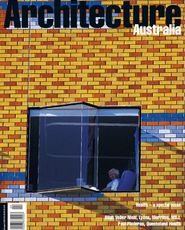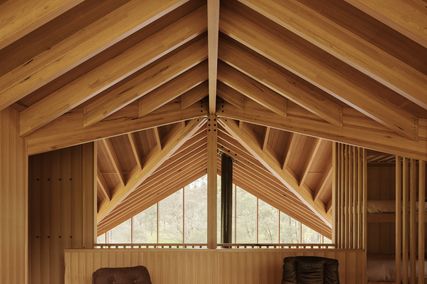Two recent architectural conferences
Planet earth is a marvellous and complex system supporting life and producing no waste. This is because all waste in the earth’s own natural system is the biological nutrient of the next sequence within the cycle. This goes beyond mere sustainability, to a system of growth, constant diversification and seasonal change.
The discovery of, and experimentation with, the planet’s technical nutrients – principally chemicals and metals – has enabled humankind to incrementally build a culture which is becoming technically, rather than biologically dependent. And while many of the technical discoveries on which we now rely – from satellite communications through to air travel – have improved our capacity to connect, earn and live, we have generally failed to design sophisticated technical “products of service” which prevent waste or the non-degraded technical nutrients of the next part of the product cycle.
At two recent architectural conferences in the US and Australia (AIA Convention in Charlotte, North Carolina, and the RAIA Convention in Melbourne, Victoria), leading strategists addressed these issues with compelling insight. William McDonough, architect and former Dean of the University of Virginia and co-author of Cradle to Cradle (with chemist Michael Braungart, North Point Press, 2002), challenged the environmental concepts of “reduce, reuse and recycle”. He believes they perpetuate the one-way cradle-to-grave manufacturing model, the source of insurmountable waste and pollution. In a brilliant expose, McDonough attacked the concepts of efficiency compared to effectiveness, and provided a visionary set of principles to bring about an eco-effective solution to our technical dependency. He also illustrated the collateral effects of isolated solutions – why enforce an energy rating system requiring habitable buildings to be sealed when the toxins associated with synthetic interior finishes, linings and furniture are a proven health hazard without constant fresh air?
Two weeks later in Melbourne, futurist Dr Peter Ellyard, author of Ideas for a new Millennium (Melbourne University Press, Second Edition, 2001) coincidentally connected with McDonough’s arguments, conveying the interdependency between global and local scales through a world social view. One of his many propositions – that modernism was the architecture of “fundamentalist” cowboys, deeply at odds with the architectural principles of tomorrow’s “liberalist” cosmonauts – had many points of argument. Cowboys dominate the world with a single vision, which is their vision, whereas cosmonauts see the benefit of “cultural customisation”, principles of interdependency and by extension, a technical no-waste cycle. Putting his arguments into practice, Ellyard has developed a financial banking solution for innovative, eco-effective projects, which has AUD$2.8 billion worth of projects on its books.
These two speakers, of the 100 or more that presented at these two conferences, made the effort to attend worthwhile alone. Next year’s RAIA conference in Sydney (25-28 May, 2003) will hopefully drill deeper into these innovative patterns of thinking which connect ecology, equity and economy.
Graham Jahn FRAIA
RAIA National President















